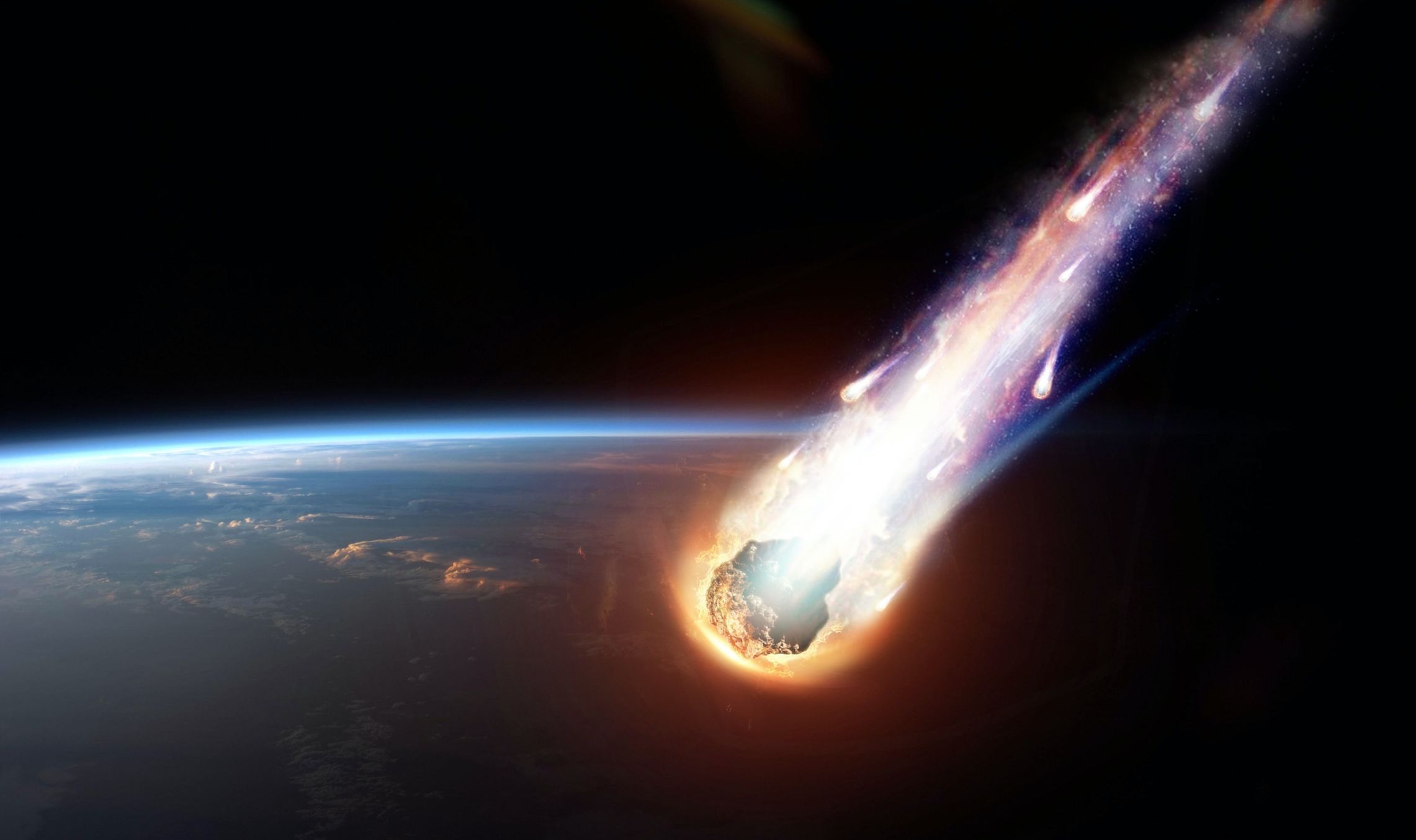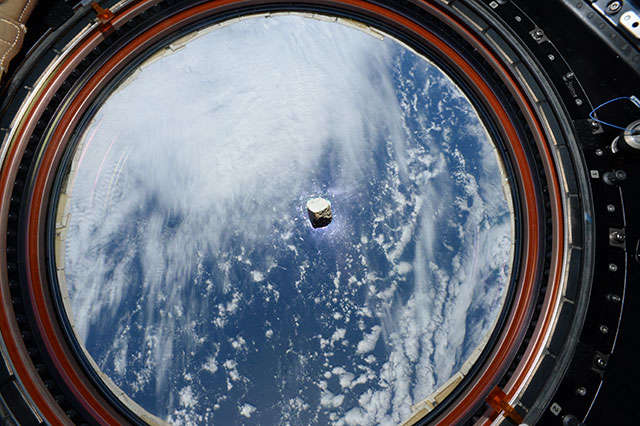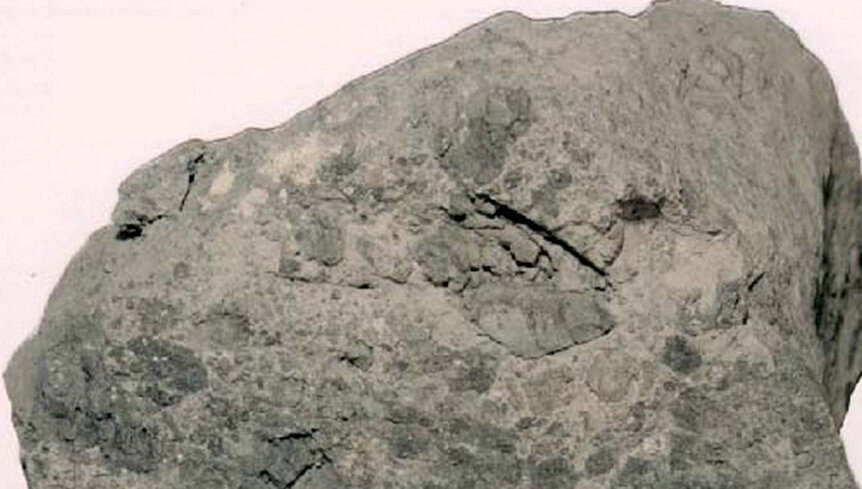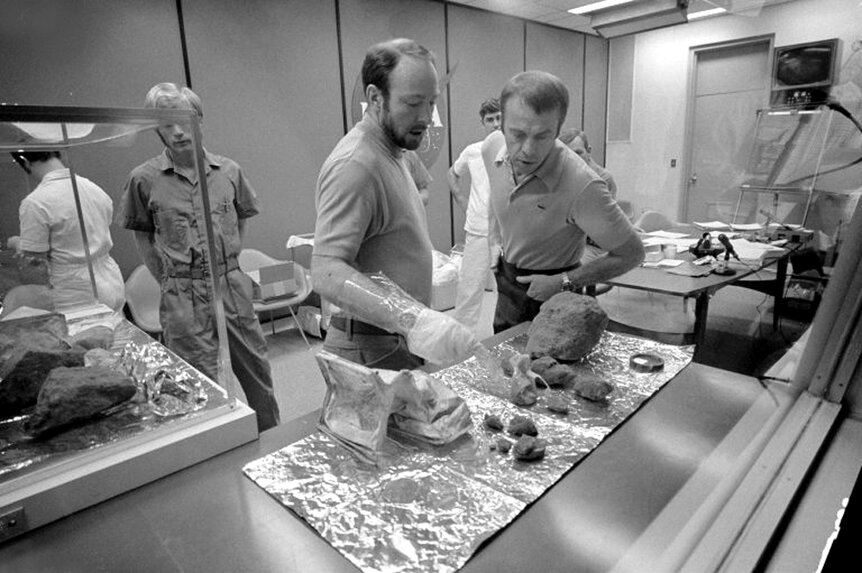Create a free profile to get unlimited access to exclusive videos, sweepstakes, and more!
Making Sense of Big Bertha, a Meteorite FROM Earth, Found on the Moon
Big Bertha flips the script on the standard meteorite story.

The way we talk about asteroids and meteors in entertainment and in the media tells us something about how we feel about them. For years, giant space rocks have been an easy shorthand for the end of the world. If you want an end of the world story with a sci-fi flavor, there’s nothing better than a deadly asteroid. Viewers can choose their favorite apocalypse from movies like Asteroid, Asteroid vs Earth, and Earthstorm, in addition to the two-part miniseries Meteor. And those are just the options streaming on Peacock.
Space rock movies probably aren’t going anywhere, but there has been a shift in the way we think about impactors in recent years. Mixed in with the expected apocalyptic language, headlines have started to shift toward cute and even goofy terminology. That might have something to do with the recent success of the DART mission, which demonstrated our ability to change the path of an asteroid. It might also be because most impactors, even relatively powerful ones, aren’t really worth worrying about.
On December 18, 2018, a meteor 10 meters (32 feet) in diameter and weighing an estimated 1,500 tons, punched through the atmosphere and exploded over the Bering Sea. Almost no one noticed. Most of the stuff small enough to get through unnoticed doesn’t really pose a threat, and we’ve got eyes on pretty much everything else.
For More on Asteroids and Meteors:
AstroForge Space Mining Company Prepares for Launch to Secret Asteroid Target
NASA Charts Mission to Apophis, the Near-Earth Asteroid Named for the Egyptian God of Chaos
Cometary Dust Smashed Tiny Craters into the Surface of Asteroid Ryugu
Our feelings about space rocks are shifting from one of fear to one of excitement and fascination. It’s almost as if we’ve started to find them cute. That might explain the spate of ridiculous size comparisons. Where once space rocks were compared to stadiums and skyscrapers, now we’re seeing corgi-sized meteors, asteroids the size of half a giraffe, and impactors measured in stacked Danny Devitos.
Space rocks are rehabilitating their image and it’s high time we celebrate what is perhaps the coolest meteor ever found.
Some Meteorites Come from the Moon or Mars
The total number of meteorites (the name given to meteors which survive their trip through the atmosphere) on Earth is unknown, but we’ve collected and classified tens of thousands. The lion’s share of those, more than 99%, come from asteroids, according to NASA. During the formation of the solar system, most of the matter condensed to form the Sun, planets, and moons. The leftovers collected into rocks both large and small, and those which haven’t yet smashed into something are still orbiting the Sun, mostly in the asteroid belt between Mars and Jupiter. Most of our meteorites come from there.
A much smaller portion, roughly 0.2% according to NASA, come from Mars and the Moon. Several billion years ago the solar system was a much more chaotic place. The reason violent impacts are so uncommon now is because most of them already happened, and some of them were truly catastrophic. We’re talking asteroids big enough to scour the surface and eject material from Mars and the Moon out into space like a shotgun blast. Each chunk of cosmic buckshot traveled away from its place of origin, and some of it came to rest on Earth in the form of meteorites.
We can tell the difference between meteorites from asteroids and meteorites from someplace else because of what we find inside them. The composition of rock and metal is like a fingerprint, and, in the case of Mars, we find tiny bubbles of Martian atmosphere trapped inside. Finding a Martian or Lunar meteorite on Earth is incredibly rare, but not as rare as finding an Earth meteorite somewhere else.
Big Bertha Is a Meteorite That Originated on Earth but Was Discovered on the Moon
Everyone always wants to talk about asteroids hitting the Earth and meteorites crushing our cities, but what about when the Earth turns the tables and takes a shot into the dark? That’s what happened roughly 4 billion years ago, according to a recent analysis of a Moon rock called Big Bertha.
RELATED: One of Earth’s oldest rocks may have been found… on the Moon
During Apollo 14 in 1971, astronaut Alan Shephard was walking on the Moon and looking for interesting rocks to bring home. He and fellow astronaut Edgar Mitchell were particularly interested in large stones that could be studied back on Earth to learn more about how cosmic ray radiation interacts with the lunar surface. Shepherd came across a football-sized rock weighing about 20 (Earth) pounds, and they carted it back to the ship along with 74 pounds of other Moon rocks.
At the time, the rock designated 14321 was the largest Moon rock ever collected, earning it the nickname Big Bertha. It remains the third largest Moon rock today. Nearly half a century after Apollo 14 astronauts brought Big Bertha home, researchers gave it another look using more updated techniques and arrived at a startling possibility. Big Bertha isn’t from the Moon at all, at least not all of it.
Big Bertha is a type of rock called breccia, characterized by shards of various rocks cemented together. It’s believed that Big Bertha and rocks like it formed on the Moon about 4 billion years ago, in the aftermath of an incredible asteroid impact. An object with an estimated diameter of 175 miles (282 kilometers) carved a huge crater into the surface of the Moon. Later, that crater filled in partially with lunar magma, forming a volcanic plane. The chaos of that event shattered existing rocks into fragments known as clasts and remixed them with magma making lunar breccia and creating Big Bertha in the process.
Researchers studied one of Big Bertha’s clasts, a chunk of felsite, and found some unexpected characteristics. The felsite clast seems to have formed under conditions with more oxygen and cooler temperatures than the ancient Moon had to offer. They offered two possible explanations, either our understanding of the ancient Moon is off or that clast came from Earth. In the same way that we know when we’ve found a Martian meteorite, we’re pretty confident that Shephard accidentally picked up a chunk of the Earth on the Moon and didn’t know it.
Because of its seemingly unique origin story, it’s also the oldest known Earth rock in existence. Having jumped ship in the first 500 million years of the planet’s history, it was perfectly preserved for 4 billion years on the surface of the Moon, just waiting for us to build our rockets and find it.
Looking for more meteorite fun? Catch our selection of impact disasters streaming now on Peacock.





























